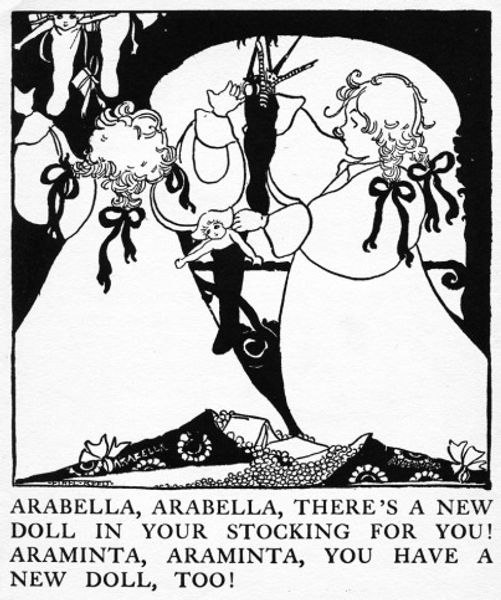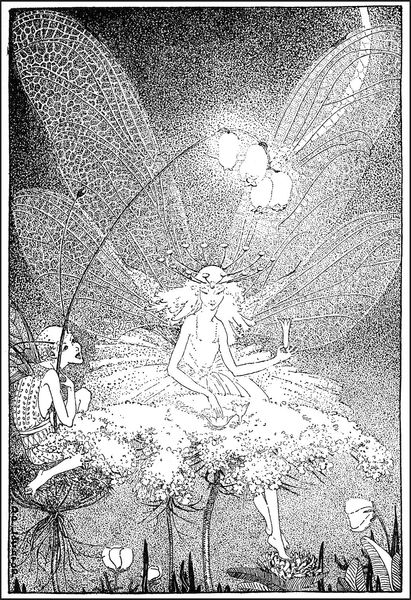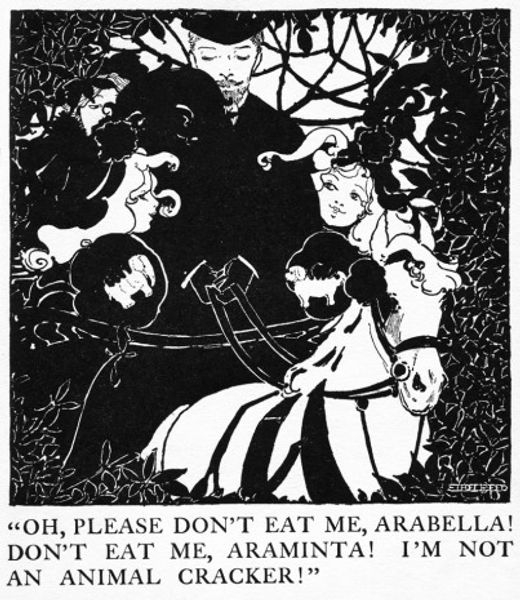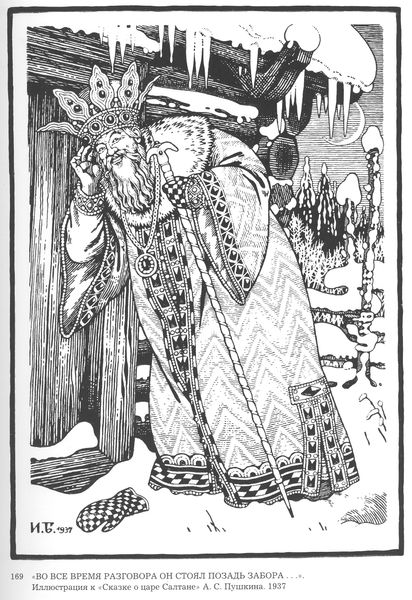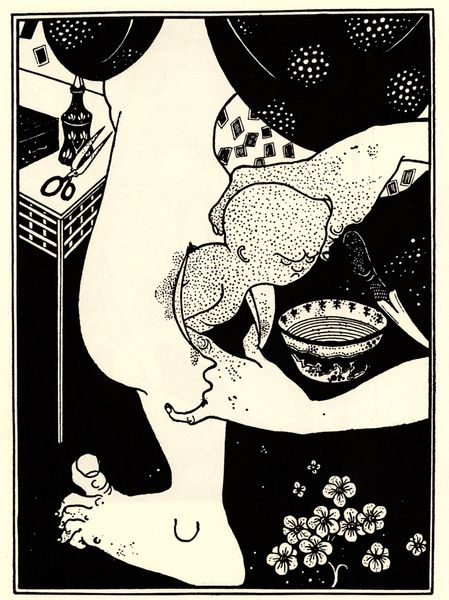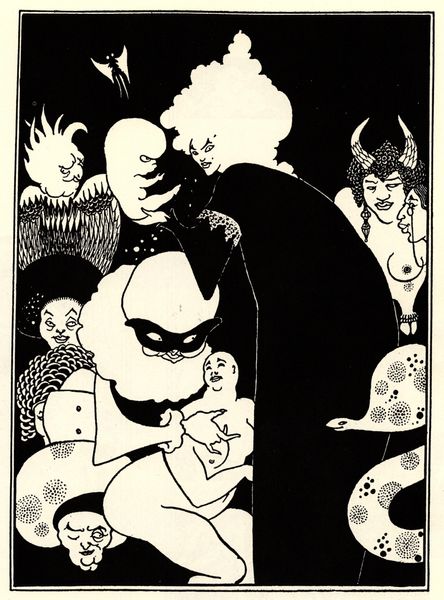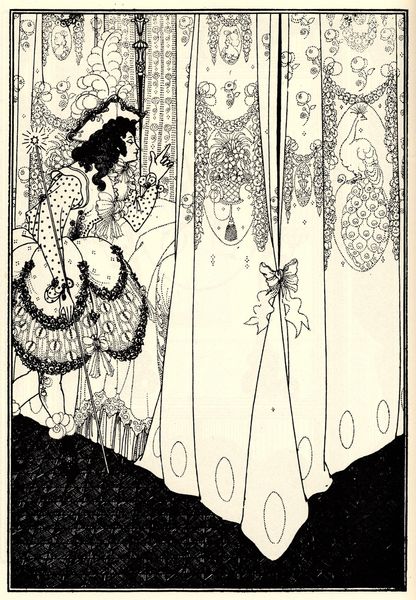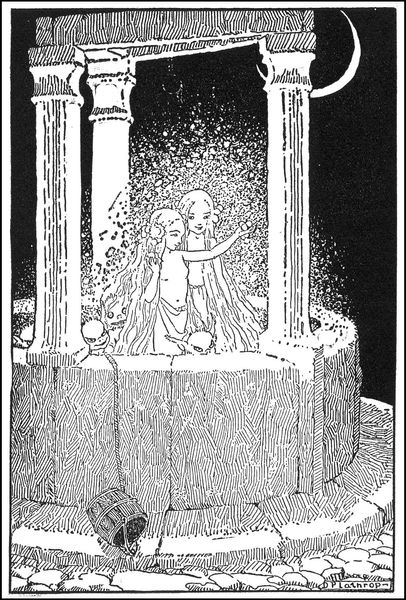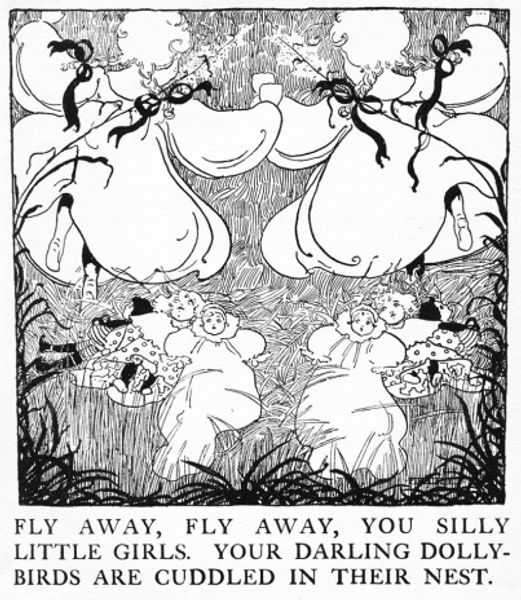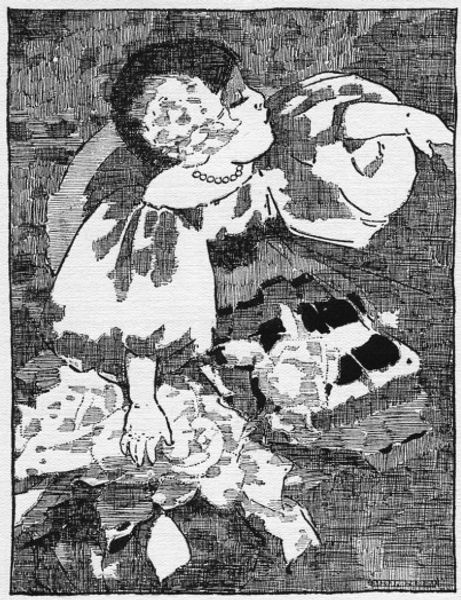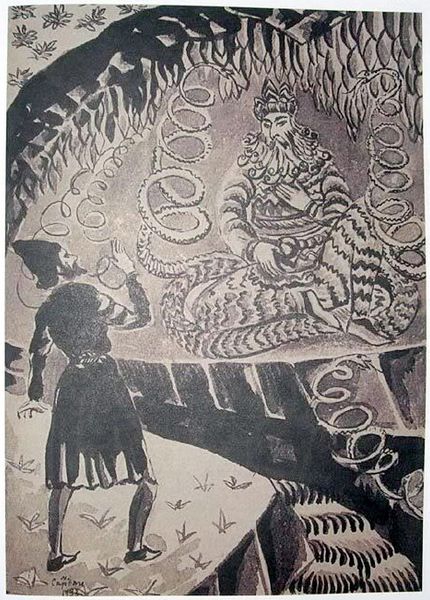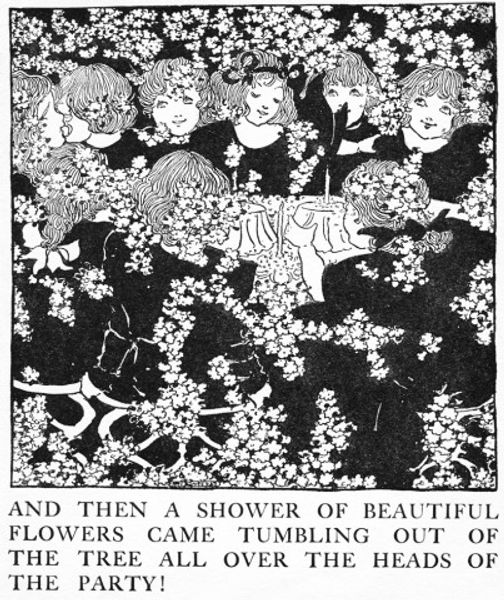
drawing, pen
#
drawing
#
comic strip sketch
#
quirky illustration
#
art-nouveau
#
narrative-art
#
comic strip
#
figuration
#
ink line art
#
line
#
pen
#
decorative-art
Copyright: Public domain
Editor: So this is an illustration from "Arabella & Araminta Stories" made around 1895 by Ethel Reed. It looks like it's pen and ink on paper. What strikes me most is the swirling, almost overwhelming decorative quality - and that central figure! What do you see in this piece? Curator: Indeed. What a fascinating echo of Art Nouveau’s dance with symbolism! Notice how the father figure is positioned almost as a halo, or perhaps a moon, a luminary presence for the girls. But consider: what does it mean that he is comprised of two conjoined figures? Are they representations of memory? Psychological projections of an idealized paternal image? Editor: So, their declarations of being good – is that sincere or performative? And the conjoined figure feels… complicated. Like they’re trapped in this expectation. Curator: Precisely! It evokes that very tension: the expectation versus the lived experience. Consider also the abundance of gifts. Are they symbols of affection or tools of control? It's not simply about parental love, but societal expectation pressing down, particularly on young women at the fin de siècle. Ethel Reed, ahead of her time, captured it all. What visual elements might suggest this further? Editor: The presents, piled high, feel almost oppressive, like a bargain has been struck: obedience for material things. The text only reinforces the point. Curator: It's a complex visual equation, isn’t it? Reed gives us not just pretty decorations, but an invitation into a dialogue on expectations and societal pressure. Editor: It's incredible how much the symbolism deepens the image. I see this illustration in a completely different light now, more poignant and critical than initially perceived. Curator: Exactly. It’s a testament to the enduring power of symbols in unlocking layers of meaning and engaging us with our own cultural history.
Comments
No comments
Be the first to comment and join the conversation on the ultimate creative platform.
